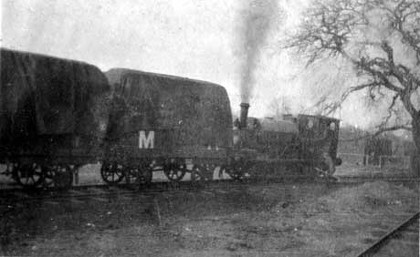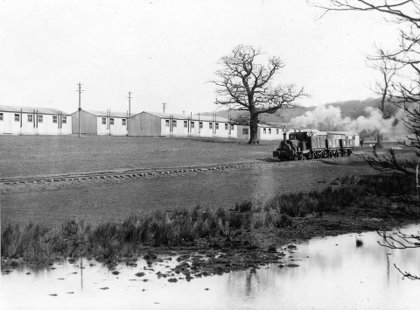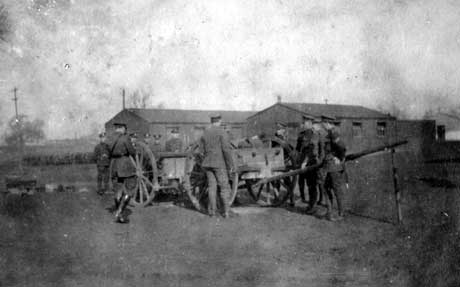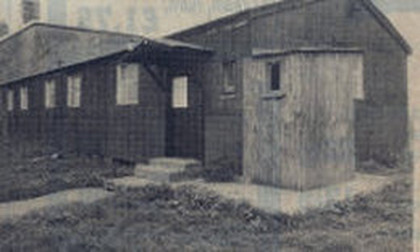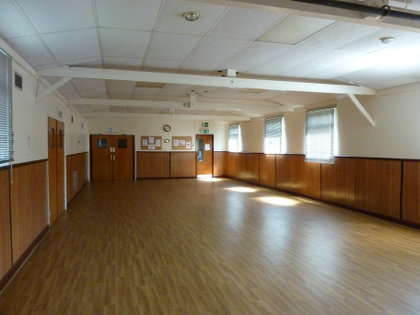Dyke Village Hall
The building we now know as the Village Hall has for over a century served a wide range of uses and has not always been located in Dyke. Originally built during the First World War as an army hut located the grounds of Belton House near Grantham.
In the begining
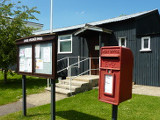 The Great War as the First World War became known, changed many things including the lives of a great many young men and women.
The Great War as the First World War became known, changed many things including the lives of a great many young men and women.
.
The Great War as the First World War became known, changed many things including the lives of a great many young men and women..
Joining the services became a matter of pride and few thought throughthe implications of “taking the Kings shilling”.
Thousands of those young men and women were embarking on a journey that was far beyong anything they had previously experienced or even imagined. The roles these young men and women were about to take up required a period of intense training and locations to carry out such training were desperately sought. As many in the country, Lord Brownlow owner at Belton House, felt he needed to contribute, King and country were worth fighting for. In September of 1914 his Lordship gave permission for land on his vast estate to be used as an army training ground. Troops who found themselves initially stationed at Belton were housed in communal bell tents erected in the grounds. It was not long, however, before the tents were dismantled and a more permanent set of building were erected on the site with one of them being what was to become the village hall at Dyke.
First World War army camp of prefabricated huts in the grounds of Belton House, Grantham.
Photo courtesy of the Society for Lincolnshire History and Archaeology.
With esculation of the war the camp grew and soon became a small town housing around 20,000 men all being trained prior to being sent off to fight at the front. Such a large body of men needed services and supplies which were transported using a standard gauge railway as a branch line off the main line at Peascliffe north of Grantham. A 670 bed hospital was also built as were a number of chapels which satisfied the soldiers need to worship during those troubled times.
Belton Park, the Machine Gun Corp 28 March 1919. The Belton Express steam train and wagons.
Photo courtesy of the Kings Own Museum.
The standard gauge railway that served the army camp at Belton House, Grantham, during WW 1.
Photo courtesy of the Society for Lincolnshire History & Archeaology.
Satisfying an Armies Needs
Belton was initially used as the location for training and forming what became known as the 30th Division that was made up almost entirely of volunteers forming battalions from the great northern industrial cities of Manchester and Liverpool. Once formed the 30th Division or “Manchester and Liverpool pals” as they became known, moved to Salisbury Plain in late September 1915. In November the same year the 30th were embarked to France were they would face soldiers of the German army for the first time. At the start of the war in August 1914, the advantages offered by rapid firing machine guns was not appreciated by the British Army. A year into the war and it became clear that to be fully effective, machine guns needed to be used in larger numbers and crewed by specialist crews. A definite proposal was made on the 2nd September 1915 by the War Office to form a single specialist Machine Gun Company (MGC). The Machine Gun Corps was created by Royal Warrant on 14th October and on the 18th October 1915 Belton became the depot and HQ for the newly formed Machine Gun Corp. The camp did not seem to have had the happiest of reputations. One Sergeant stationed there described it as “A terrible place, full of mud, water, and not much organisation.” Ref The Western Front Association.
Belton Park, training troops for the Machine Gun Corps, 28 March 1919.
Photo courtesy of the Kings Own Museum.
The corp had 230 officers, 163 guns, 60 cooks and 3,123 what started as able bodied men. Between 1915 and 1920 a total of 170,500 officers and men served with the MGC with each one spending a minimum of 5 weeks training before being posted to fight in France on the front line.Initially training had been for a period of about 3 months but the urgent need for men soon saw this period reduced. Initially the Maxim gun was used but soon were replaced by the Vickers which became the standard gun supplied for the next 50 years. The Vickers machine gun is fired mounted on a tripod and is water cooled through a reservoir jacket of water around the barrel. The gun weighed 28.5 pounds, the water a further 10 and the tripod 20 pounds, a considerable weight to carry in wet and muddy conditions found on the front line. Bullets were held in a canvas belt with each belt holding 250 rounds which, at maximum firing rate would be dispatched in 30 seconds. Two men were required to carry the gun and accessories and a further two the ammunition. It was usual for a Vickers gun team to have two spare men which gives you some indication of the anticipated life expectancy when in action. After their short training period the young soldiers were shipped off to fight on the fronts located over Europe. Once in position on the war front casualty numbers were very high. approximately 16, 000 men were killed and more than 45, 000 were wounded. These casualty figures were so significant that they earned the Corp the nickname of “the Suicide Club”.
The Machine Gun Corps Memorial at Hyde Park Corner, London.
Designed by Francis Derwent Wood and erected in 1925. Photo © David Dixon .
The Machine Gun Corps Memorial, known as the Boy David, can be found on the north side of the traffic island at Hyde Park Corner, London. The inscription on the main column reads; ERECTED TO COMMEMORATE THE GLORIOUS HEROES OF THE MACHINE GUN CORPS WHO FELL IN THE GREAT WAR. A further inscription on the rear records that the MGC was formed in October 1915 and disbanded in 1922. During that period 11,500 officers and 159,000 other ranks served in the Corps, of whom 1,120 officers and 16,710 other ranks were killed. 2,881 officers and 45,377 other ranks were wounded, missing or prisoners-of-war. This represented a casualty rate of approximately 30% which arose from the exposed position the machine gun crews found themselves in on the front line.
Life after the Army
The army camp built in Belton Park, Grantham, became redundant once peace had been declared as there was little need for machine gunners once peace declared.
The Machine Gun Corp was disbanded in 1922 but prior to this the old army huts and other buildings that had housed the Corp at Belton were dismantled no longer being needed. The ending of the war had changed many things and now another period of change was to occur. The army camp at Belton, scene of so many young men being trained to silence the enemy, now became silent itself once more. The buildings became redundant and were either sold off or given away by the War Office in an effort to return things to their previous state. In early 1920 the green galvanized corrugated metal sheeted army hut originally sited at Belton Park near Grantham was transported in sections by traction engine and trailer under the supervision of Mr J.Walpole. The building was to start its new life as St Georges Mission Church in a central location in the village. The purchase of the building was by auction and a figure of £95 was paid. Haulage to the site and subsequent erection was carried organised by a local man, Mr Wadsley, who received £130 for his efforts. Chairs were purchased at a cost of £7/4/0, lamps a further £7 giving a final figure of £239/4/0. Originally the money was a loan from Mr Wadsley which was finally repaid to him with a cheque on 2nd December 1927, money raised by the village.
Dyke Village Hall as it was in 1977.
The land upon which the village hall building was erected and remains standing to this day, was given for the purpose by Mr G. A. Bettinson of Birmingham. Once re-erected a service of consecration was conducted by the Bishop of Lincoln which enabled Church of England services of worship and holy baptism to be held. By 1965 Sunday School services took place three times a month, Evensong at 3 pm. every thrid Sunday and Holy Communion at 9 am. every fourth Sunday of every month. Lying in the parish of Bourne, services were conducted by Canon Laurence or the Curate, Mr Levick.
As a result of the hall being used for a variety of activities the sanctuary was partitioned off using a blue curtain. Behind the curtail lay the alter screened by a set of maroon curtains only drawn back for services. The alter stood on a blue carpet and covered with a maroon and cream embroidered alter cloth. On the alter stood a brass cross and two candlesticks. A wooden lectern was brought out for services and upon it placed a Bible presented at the opening of the hall by Miss Grinter. Other events took place in the hall including WI, Youth Club, Christmas parties, whist drives, dances, concerts, beetle drives, rummage sales, village meetings and even some 21st birthday parties and wedding receptions. Following the first meeting of the “Mission Improvement Committee” on 12th October 1961 the rear of the hall was partitioned off to provide kitchen facilities and a ladies toilet. gentlemen had an outside toilet constructed of corrugated sheeting and timber frame seen in the above photograph. Other additions were made and included two heaters in hall, a stage in four sections for ease of assembly and removal and an electric clock given by the Youth Club in memory of Councillor C. Stubbs.
In 1976 after a long period of negotiation, Dyke Mission Hall became the official village hall. At a meeting of the Bourne Town Council’s finance and general purposes committee it was decided that as a good will gesture and to assist the hall steering committee, they would pay the £96.65 incurred through landlords legal expenses. “This matter has gone on for two years instead of for a few months” commented Councilor Don Fisher. It was noted that there was no money available when the new management committee took over responsibility from the hall steering committee. “In my time, Dyke has had very little from Bourne Council, and we hope that the council will pay this money as a goodwill gesture especially since there is sadness in Dyke because its school is schedule to close”. This was seen as a serious loss to the village necessitating children being transported out of the village with additional costs and adding to a longer school day. Councillor Ray Cliffe suggested that instead of paying £96.65, the council should make a donation of £200 to the hall committee. Making a donation in this way was against normal policy Councilor Ron Alexander said. A village meeting was convened and it was decided to form a hall management committee with Mr David Stubbs as Chairman, Mr Ernest Needham as Vice Chairman and Mrs Sheila Bailey as Secretary. The committee took over the lease for the hall and announced that priority would be given to improving the interior and exterior of the hall and an appeal for money would be launched in the village as soon as possible. The Village Hall management committee is still in palce and forms an important part of the community in that it manages the hall affairs and future development.
Dyke Village Hall in the spring of 2015. Photo © B. Parkinson.
Even though there is a decorative ceiling in the halls interior, the original wooden trusses are still clearly visible giving a clue to its origins. One hundred years ago these walls resounded to the noise of soldiers expressing the good times and the bad. Soldiers being trained to remove the enemy from their path and bring a terrible war to a close, an end that would take years to reach. Soldiers in their teens and about to go over to France with many never to return. One third would not return and a further 45,377 would be wounded, missing or taken prisoners-of-war.
Dyke Village Hall interior spring of 2015. Photo © B. Parkinson.
In researching this page reference was made to the following:
The Long, Long Trail: The Machine Gun Corps.
The Web Site of the Kings Own Royal Regiment.
The Web Site for the Western Front Association.
Society for Lincolnshire History Archaeology.
More About:
Dyke WI
The Windmill in Dyke
Dyke Baptist Chapel
Dyke Village Green
Dyke Village Hall
Dyke Engine House
The Railway in Dyke
The Wishing Well Inn
The Car Dyke
Dyke Village Life
Contact Dyke Village Hall
Main Road, Dyke, Bourne, PE10 0AF
Email: contact@dykevillagehall.org.uk


